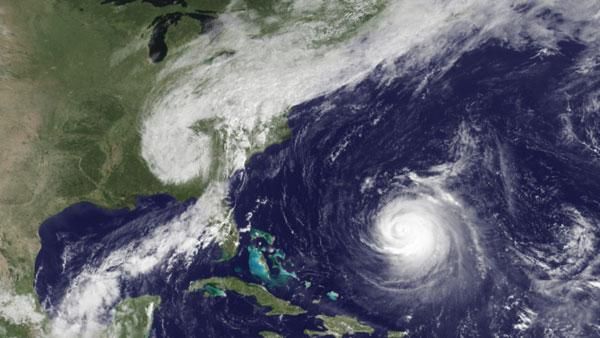
Stormy Pair: Lee and Katia Spotted from Space

Satellites are one of the key tools that forecasters use to keep on eye on hurricanes and tropical storms. The GOES East satellite snapped this image that includes both Hurricane Katia and the remnants of Tropical Storm Lee earlier today (Sept. 6).
Lee made landfall along the Gulf Coast on Saturday and is now a post-tropical cyclone which has been absorbed by a frontal system across the southeastern United States.
Lee and its remnants have spawned 27 tornadoes and dumped inches upon inches of rain in certain areas as it has made its slow march inland. New Orleans received over 10 inches (25 centimeters) of rain from the storm, and areas still recovering from Irene's torrential downpours stand to see more rain from Lee. Warnings of flash floods have gone out for parts of the Mid-Atlantic and New England.
Hurricane Katia has gone through a classic eyewall replacement cycle and there has been little change in the track forecast. Katia is expected to make a turn to the northwest and north over the next two days, before curving out to sea again.
Though Katia has weakened slightly, with maximum sustained winds of 115 mph (185 kph), it is still a major hurricane at Category 3 status on the Saffir-Simpson scale of hurricane strength.
Astronauts caught a glimpse of Katia's might from their perch on the International Space Station.
Hurricane Katia is the second hurricane and Lee the 12th tropical storm to form during the 2011 hurricane season, which has been predicted to spawn an above-average 14 to 19 named storms (which include tropical storms and hurricanes), seven to 10 hurricanes and three to five major hurricanes. An average Atlantic hurricane season will see 11 named storms, six hurricanes and two major hurricanes. August through October are the peak months of the Atlantic hurricane season.
Sign up for the Live Science daily newsletter now
Get the world’s most fascinating discoveries delivered straight to your inbox.
Tropical Depression has formed far out in the Atlantic; if it becomes a tropical storm, it will be named Maria.












